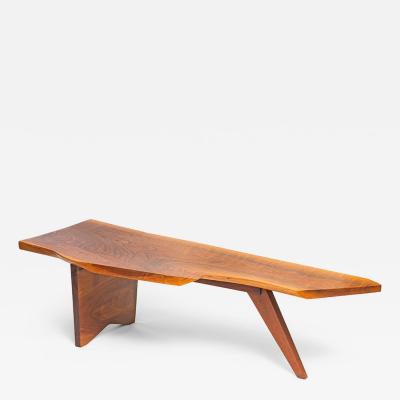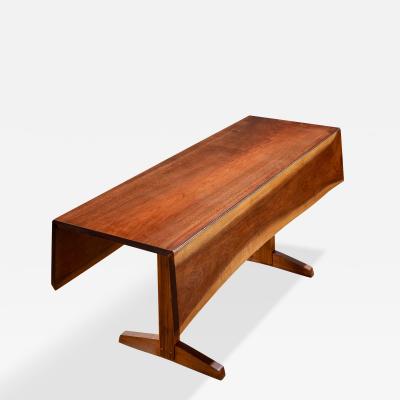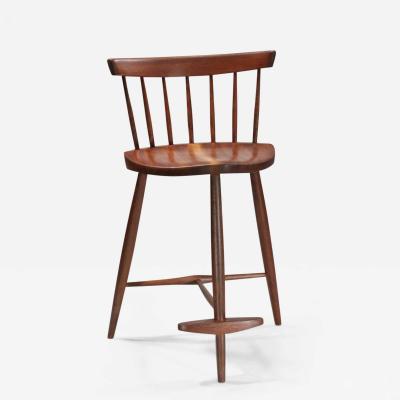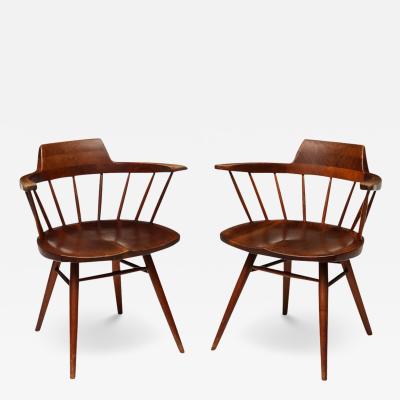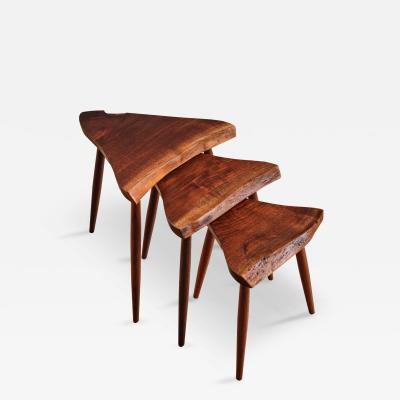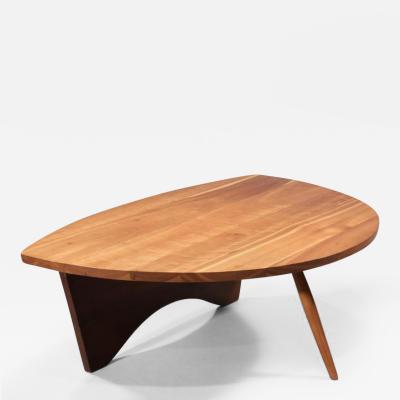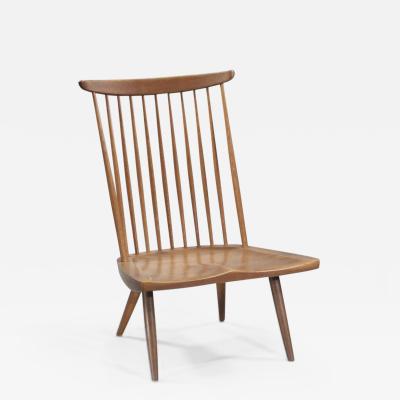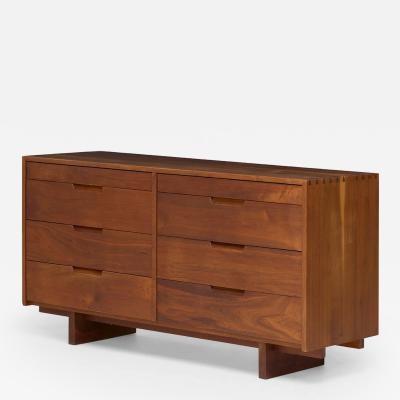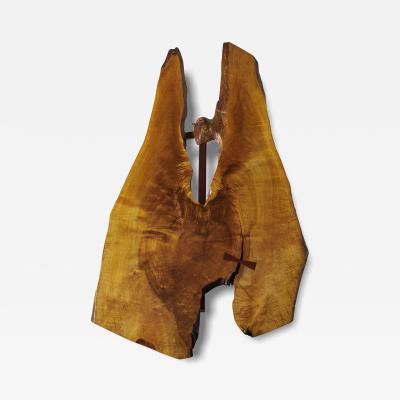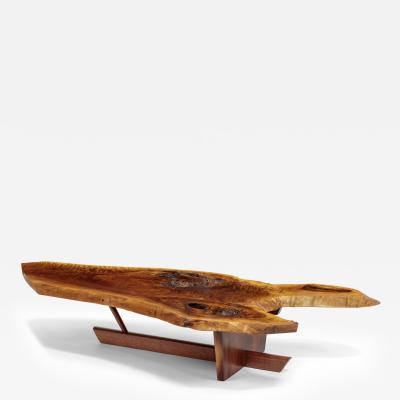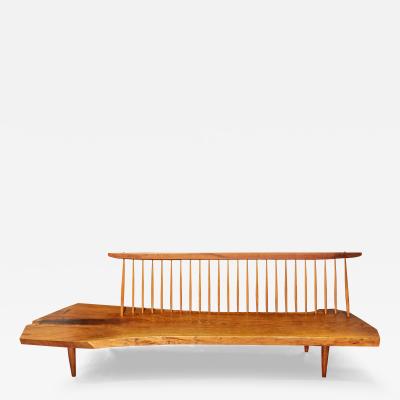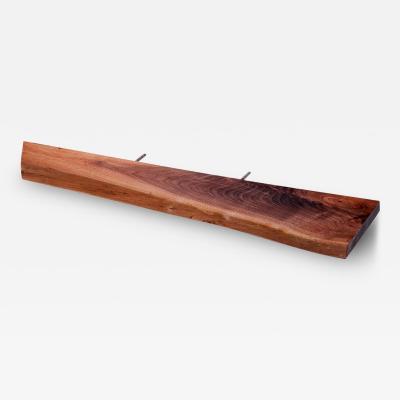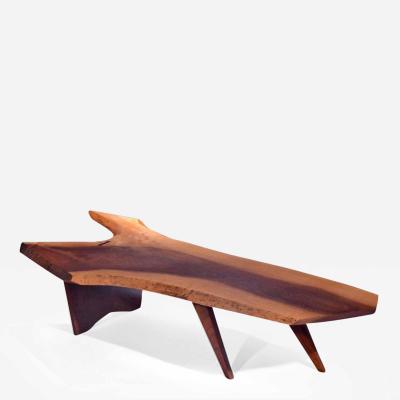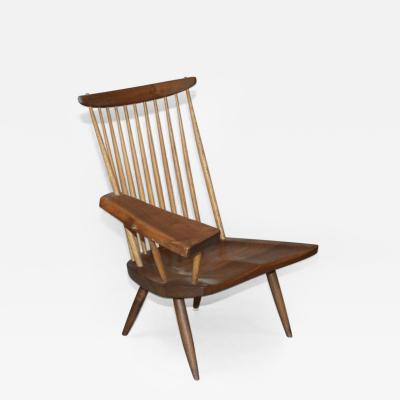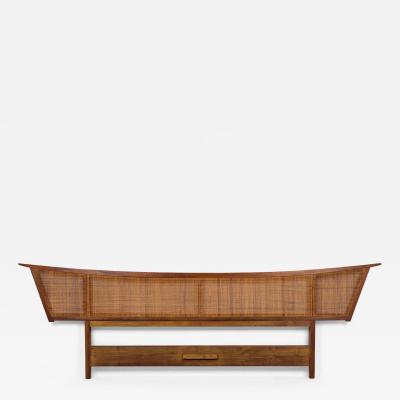George Nakashima
George Nakashima furniture explores the dichotomy between strength and fragility. Carved from magnificent pieces of rich, often rare, wood, his works are spare and elegant—the result of a formal education in architecture as well as extensive exposure to European Modernism, Eastern religious philosophy, and Japanese craft traditions.
Nakashima’s profound reverence for wood dates back to his childhood in Spokane, Washington. Amongst the towering forests of the Olympic Peninsula, he developed an abiding admiration for the inherent beauty of wood. Nakashima earned his Bachelor’s Degree in architecture at the University of Washington and Master’s Degrees from both the Massachusetts Institute of Technology and the L'Ecole Americaine des Beaux Arts in France. After some time spent traveling, Nakashima secured a job at the Antonin Raymond office in Tokyo. Raymond, a Czech-American architect, is widely recognized as one of the pioneers of modern architecture in Japan. Nakashima served as an onsite architect for the first reinforced concrete building in Japan and, in 1937, volunteered to oversee the construction of a dormitory for an Ashram run by Sri Aurobindo, an Indian activist turned spiritual leader. Nakashima declined a salary, choosing instead to join Aurobindo’s community, where he was given the name “Sundarananda” or “one who delights in beauty.” While at the Ashram, Nakashima decided to follow what he believed was his calling—woodworking.
As World War II broke out, Nakashima and his wife, Marion, returned to the United States. In 1940, the couple and their infant daughter, Mira, were sent to an internment camp for Asian-Americans in Idaho. It was there that Nakashima met an elderly Japanese carpenter who trained him in the craft of woodworking. Through the sponsorship of Antonin Raymond, the Nakashimas were able to relocate to the architect’s farm in New Hope, Pennsylvania. Nakashima rented a small house and purchased a parcel of land, where he designed and built his workshop and house—both of which are now listed on the U.S. National Register of Historic Places.
In bucolic Bucks County, Nakashima established a reputation as a leading member of the first generation of American Studio furnituremakers. Nakashima was joined by some of the twentieth century’s most iconic craftsmen, including Phillip Lloyd Powell, Paul Evans, and Robert Whitley, all of whom produced thoughtfully-crafted mid century furniture that blurred the line between art and utility.
Influenced by Japanese, Modernist, and Shaker styles, Nakashima developed a distinct aesthetic that was rooted in his reverence for wood. Dedicated to giving trees a “second life,” Nakashima believed that each piece of wood had its own character and soul. Rather than covering up imperfections, he allowed the form of the wood to dictate the shape of the furniture. He fixed cracks with butterfly joints, left “free” natural edges, rather than trimming them off as most woodworkers did, and showcased the distinct grain and burl of each slab of wood.
Nakashima’s daughter, Mira, who received degrees in architecture from Harvard University and Waseda University in Tokyo, worked as his assistant designer for twenty years. After her father’s death in 1990, she took on the task of producing backlogged orders. She now serves as the head of the Nakashima Studio.
George Nakashima furniture is permanently on view at a swathe of prestigious institutions including the Metropolitan Museum of Art in New York, the Philadelphia Museum of Art in Philadelphia, the Renwick Gallery at the Smithsonian in Washington, D.C., and the Michener Art Museum in Doylestown, Pennsylvania.
George Nakashima Furniture – Woodworker Tables Chairs Cabinets
